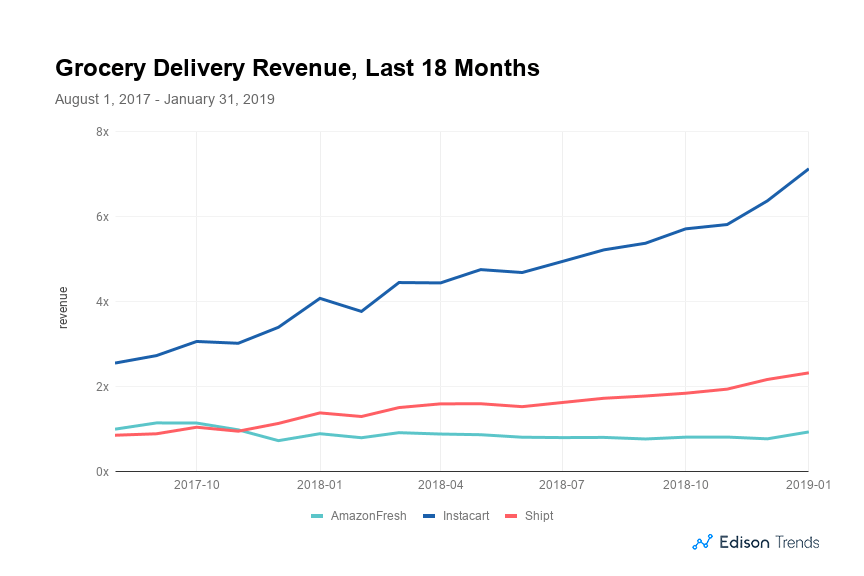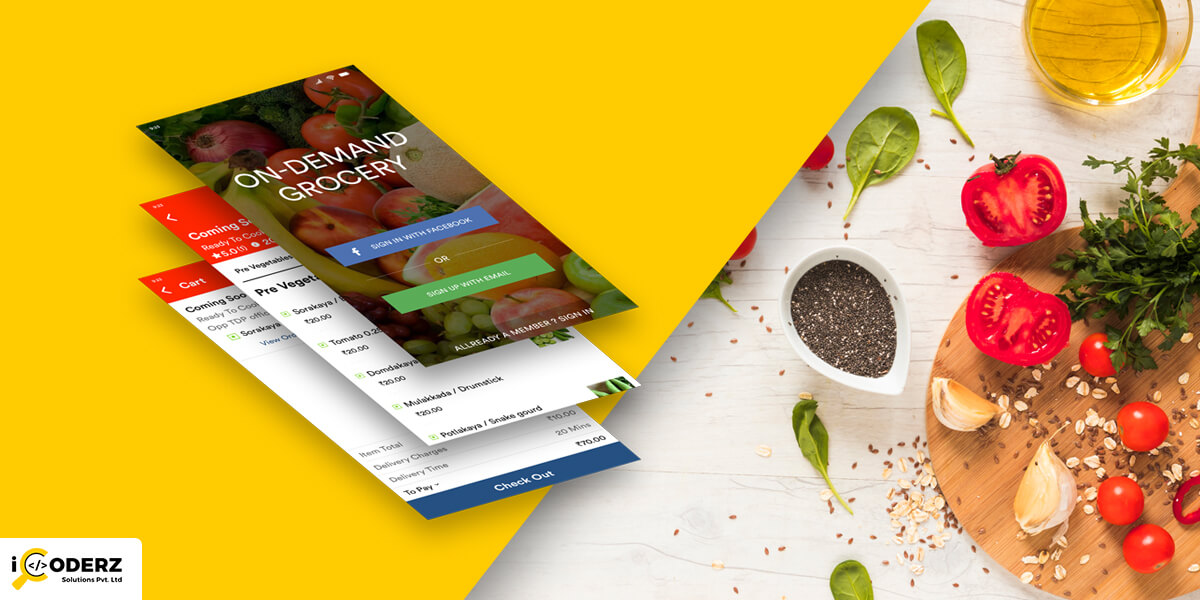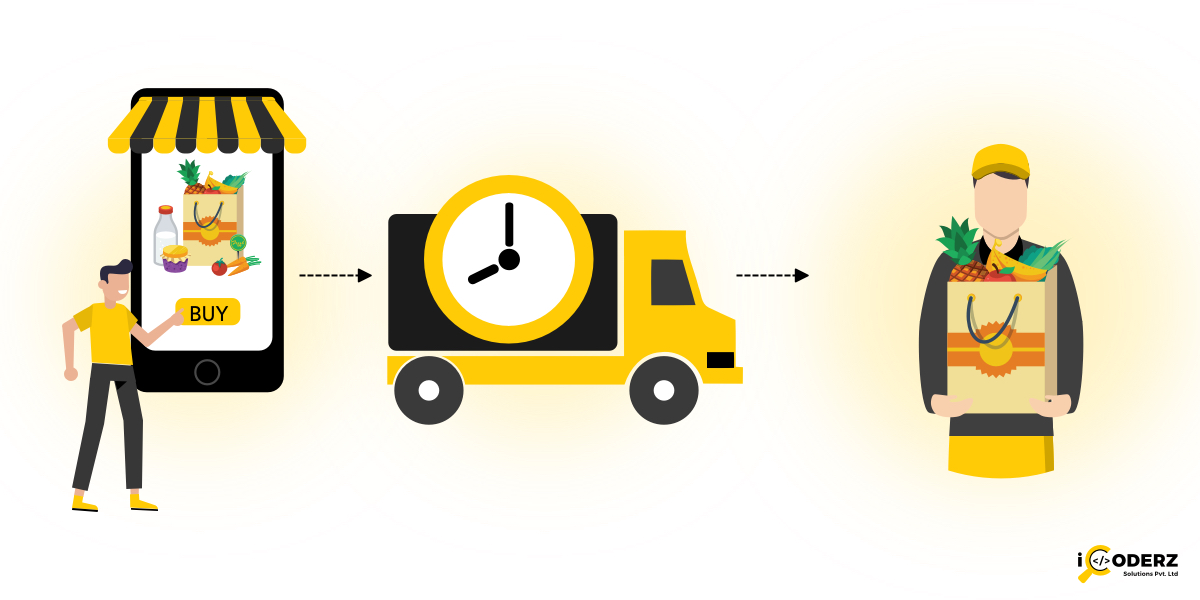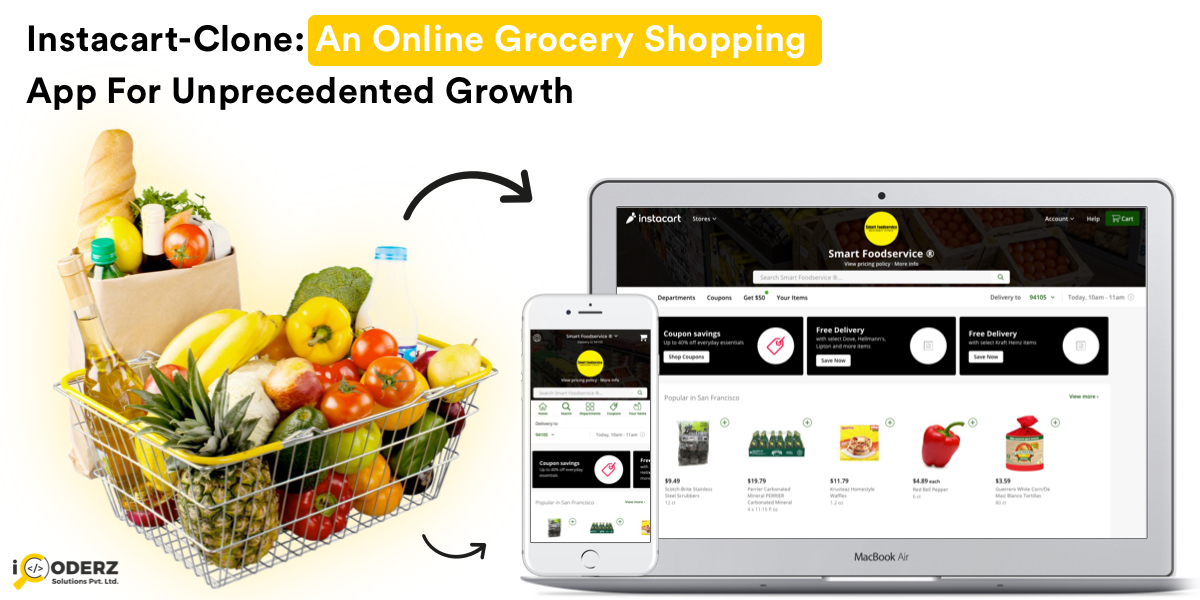Before we start discussing an Instacart-clone, we must note the unprecedented growth of Instacart app, website and business model.
Pundits expect online grocery sales to cross the US$100 billion by the end of 2025. As a result, all the companies are fighting for a huge chunk of that market. Not only Instacart, but companies like Amazon Fresh and ShipIt are also betting big. But Instacart seems to be winning the race for the moment.
The Instacart Juggernaught

According to the trend analysis of the reputed firm Edison, Instacart has seen unprecedented growth. They have surveyed 3 million shoppers. They found the following things that strongly suggest having an Instacart-clone for your business:
- In comparison to ShipIt, during the period of January 2019, Instacart generated 207% more revenue.
- On the other hand, it has out-numbered Amazon Fesh by a staggering 662%.
- Since August 2017, Instacart has grown 171%, and since January 2018 it has grown 60%. In comparison, Amazon Fresh has seen the degrowth of 6% since August 2017. Luckily, they have gained 5% since January 2018.
- If you add up the revenue of Instacart, ShipIt and Amazon Fresh, they have seen a growth of 135% on an average since August 2017 and 63% since January 2018.
- So, Instacart-clone app is as good as a guarantee for growth.
Why Is Instacart-Clone Becoming Popular?

On-Demand Mobile Apps that deliver various products and services at your doorsteps are among the defining characteristics of Web 3.0 along with Internet of Things (IoT), Augmented Reality (AR) and Virtual Reality (VR).
With the launch and popularity of the on-demand taxi booking app Uber, the entire service sector marched forward in that direction. Even e-commerce joined that march. They were already conducting their business online and mobile became the preferred device for internet access so they trifurcate their business: off-line stores, online websites and on-demand mobile apps.
Online grocery shopping was among them. As the food is among the basic necessities of our lives, there was no stopping for on-demand food delivery business and on-demand grocery delivery business.
In such a ripe time, Instacart stormed the market with a unique business model and succeeded like no other. That is the reason Instacart-clone app development is in demand.
An Instacart-Like Grocery App For Your Business In USA: All You Need To Know
The Unique Business Model
Instacart came up with a unique business model. There was only one business model for online grocery shopping. People would go to the website of their preferred grocery store and order the products they want. The store owner would get it delivered. It was a simple replication of in-store grocery shopping. What if you want various products from various local stores? Well, you would have to order individually if they offer it online.
Instacart offered a new business model. First of all, Instacart would partner with as many local stores as it could. Then it would invite local people to become shoppers. Afterward, they would accept orders from customers. A customer can order whatever he wants from his multiple and trusted local stores. A shopper will accept the order, shop all the things on behalf of the customer from all the shops requested and deliver it.
How Does An Instacart-Clone Make Money?

An Instacart-clone can make money through various revenue streams. First of all, the delivery charges. Instacart charges around $6 to $8 as the delivery charge per order. It also offers express delivery options with higher delivery charges. In addition, Instacart also offers subscription plans on a monthly basis where the subscribers don’t have to pay higher delivery charges. It also partners with local stores and shares the revenue generated through their mobile app and website.
On top of this, Instacart or and Instacart-clone can work with brands and earn through ads and promotions. Local stores also offer exclusive offers and discounts for Instacart orders as their overhead is low for them. As a result, Instacart lures more customers and end up making more money.
Online Grocery Shopping App: One Of The Best Startup Ideas Of This Year
Instacart-Clone App Development
You may be running a brick-and-mortar grocery store or you may have an online portal for the same. Instacart-clone app development will add a lot of value to your business. And, if you are a startup, online grocery shopping app is one of the best startup ideas of this year.
An online grocery shopping app in the USA helps in many ways: It increases customer’ convenience, loyalty and engagement, saves time, money and energy, allows you to satisfy more customers in many ways and grow your business.
Increased Convenience
An Instacart-clone app can increase your customer’s convenience in many ways. Customers don’t have to visit the grocery store physically. They also don’t have to go round-and-round in the superstores to locate what they want. A simple search will solve their problem. They don’t have to be bored at the long checkout queues too. In addition, they don’t have to lift heavy bags of groceries. So, an Instacart-clone app increases the convenience of customers to a great extent.
Increased Loyalty
As customers find it easy to shop through your Instacart-clone app, and you deliver them good products at a bargain price, they become very loyal to your business. In turn, it increases your business.
Increase Engagement
If your Instacart-clone app provides satisfactory user experience (UX) once, customers come back to your app often. Their frequent visits lead them to explore different parts and options of the app. Most of the time, this increased engagement results in increased revenue.
Final Thoughts
So, an Instacart-clone app can increase the revenue of your grocery business many folds when you entrust your Instacart-clone app development in the hands of an experienced mobile app development company.
iCoderz Solutions is an end to your search for experienced Instacart-clone app development company. In reality, iCoderz Solutions is a full stack mobile app development company with equal experience in web development too. We have dedicated teams for iOS app development, Android app development, and web development. They have already built solutions like Instacart-clone app. In addition, we also offer our Software as a Service [SaaS] with monthly subscription plans. Curious? Contact us to know more and have your grocery business up and running quickly.
Best On Demand Food Delivery Apps Development And Solutions
How to build on-demand grocery delivery app for today’s tech-savvy





3 comments